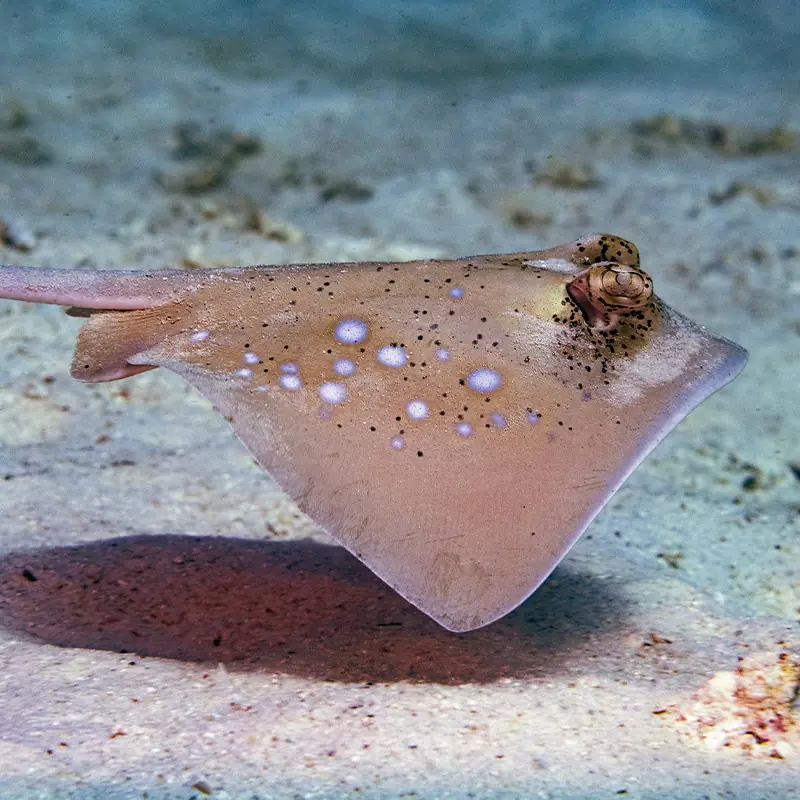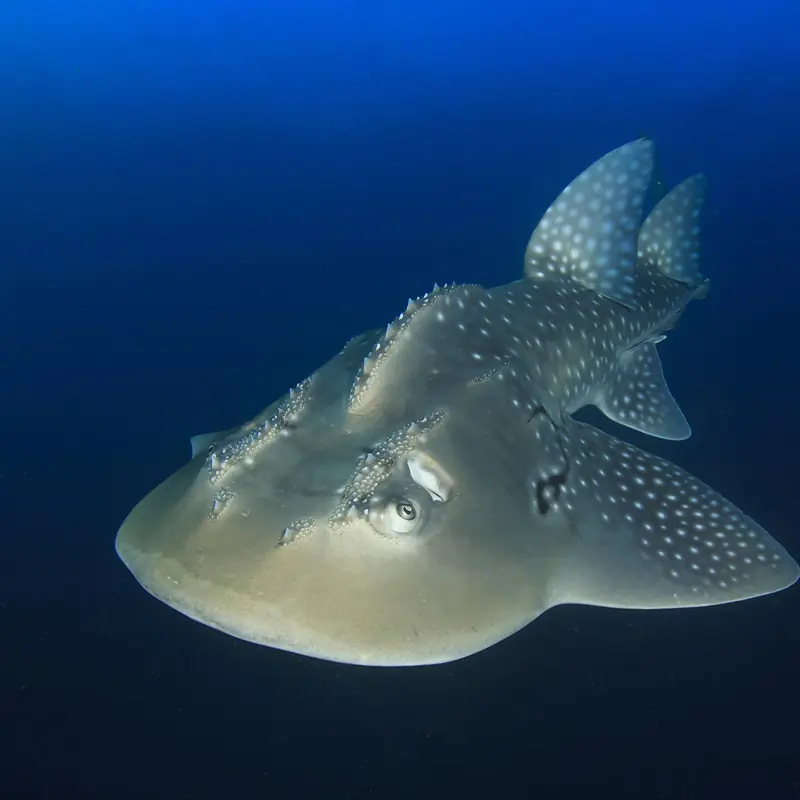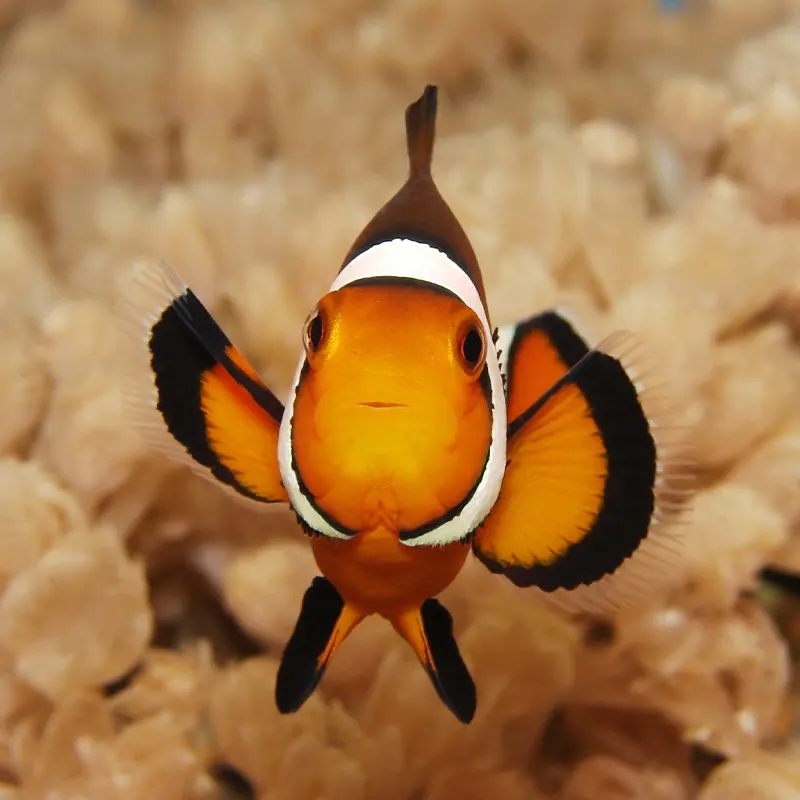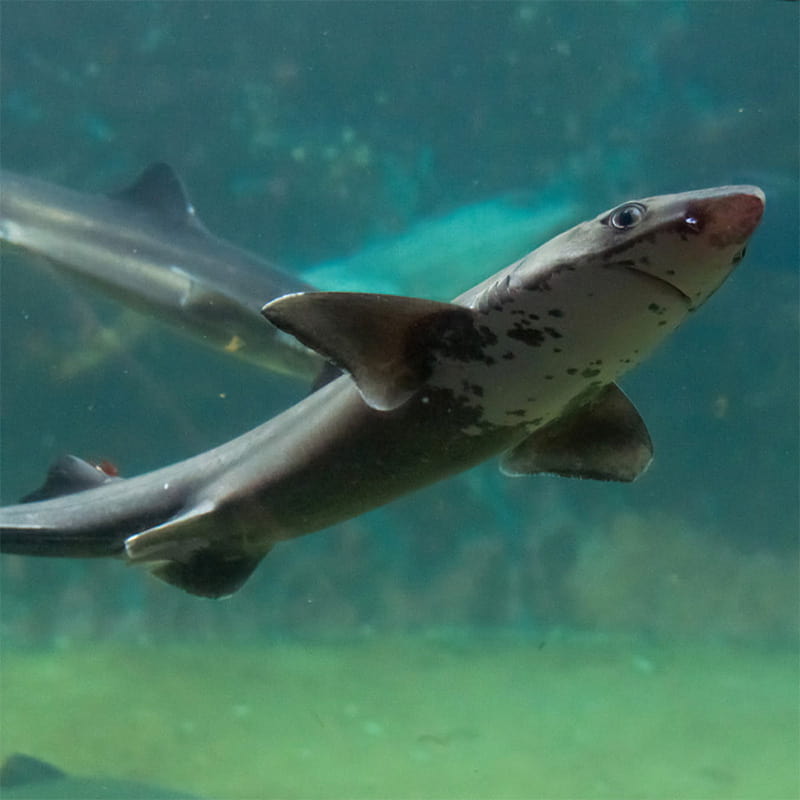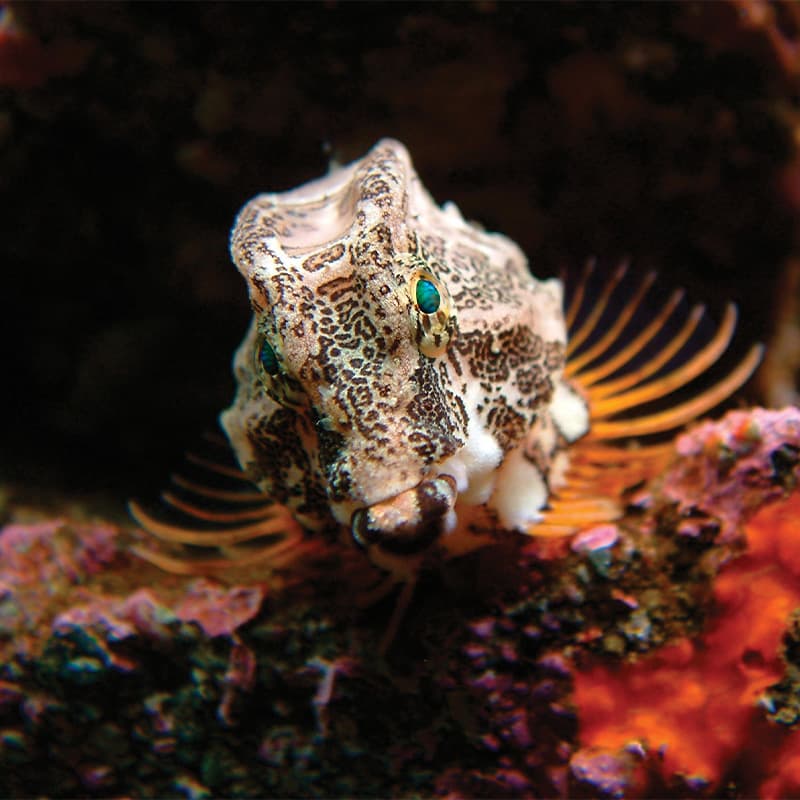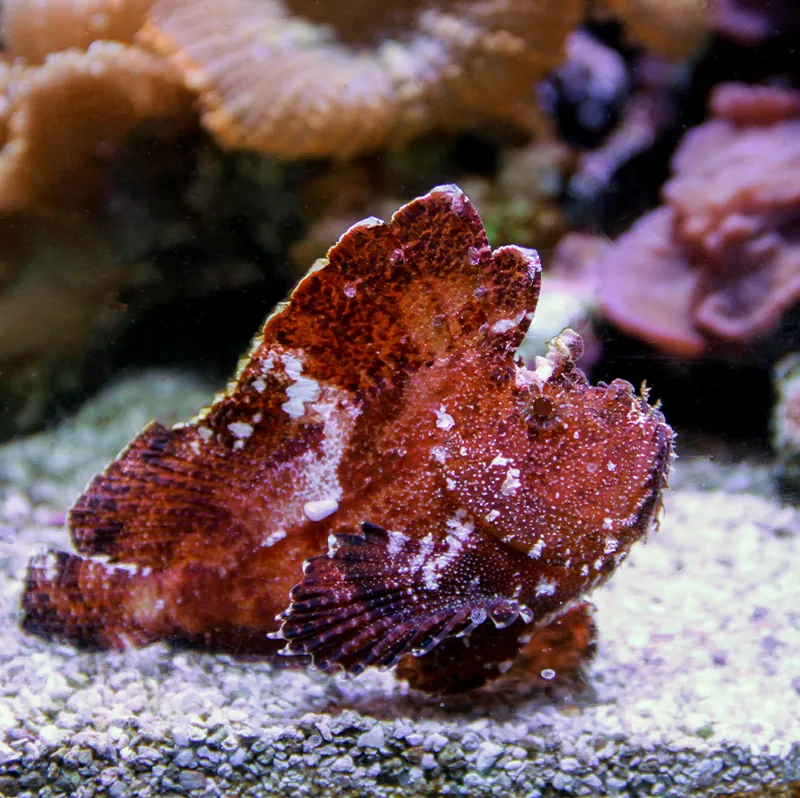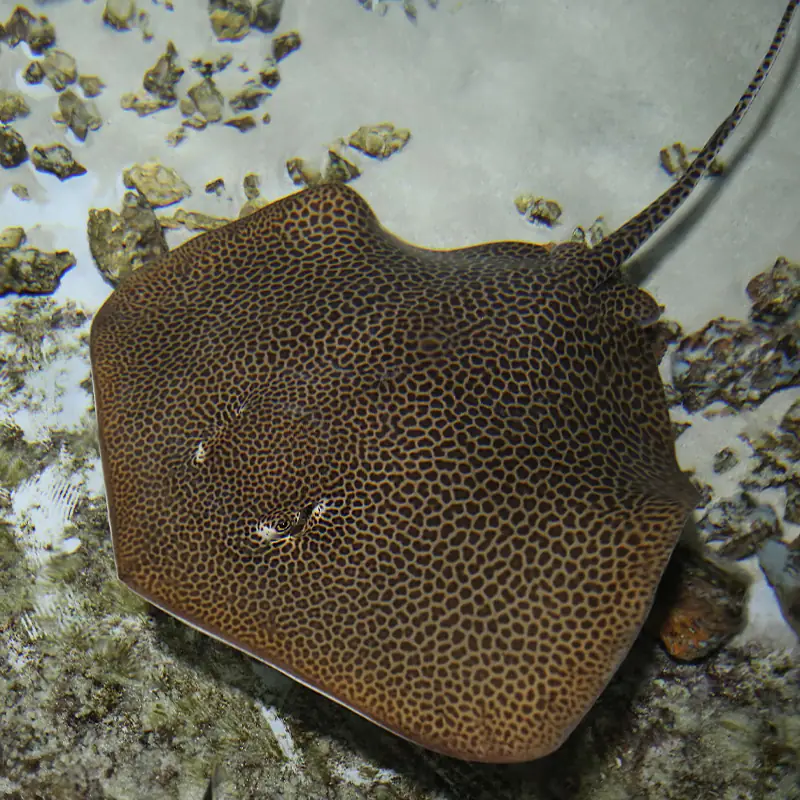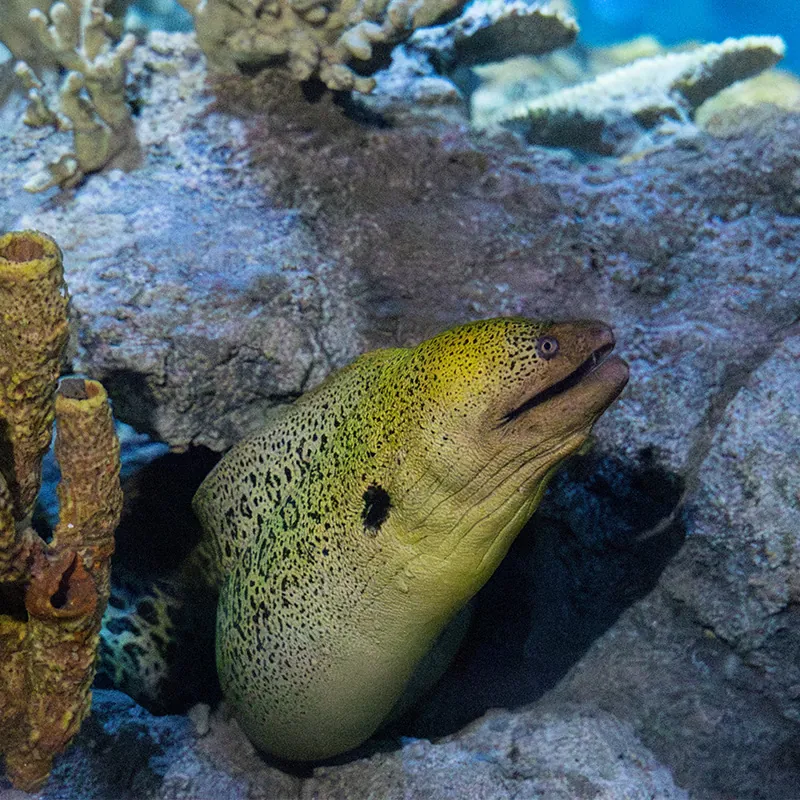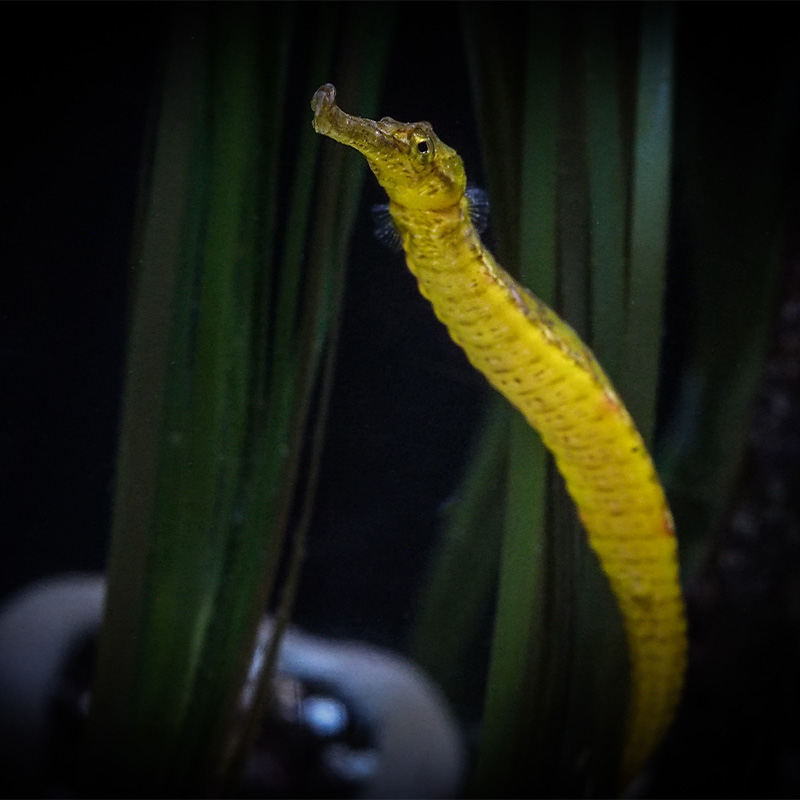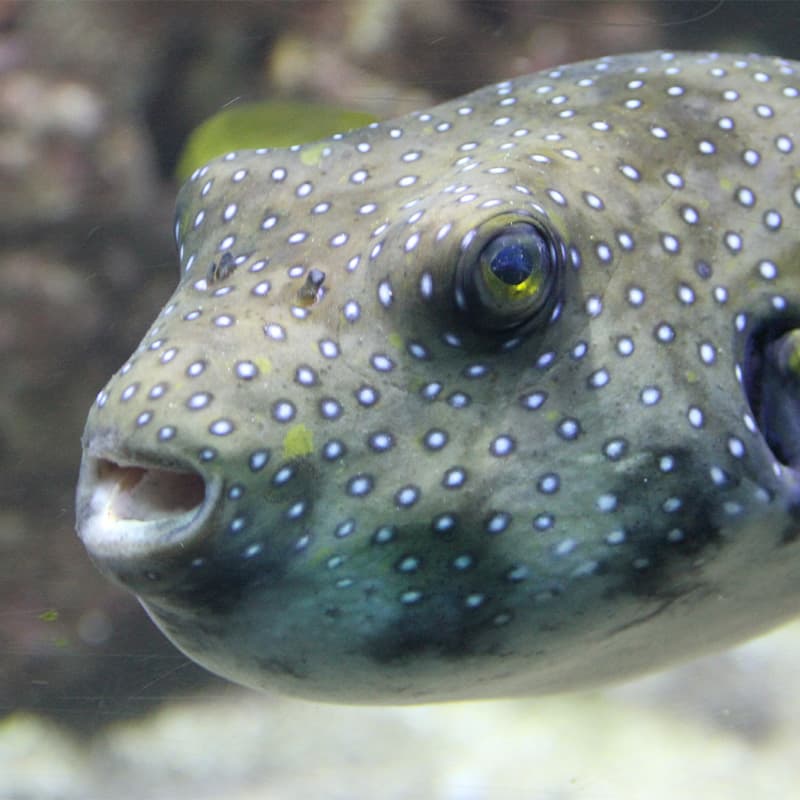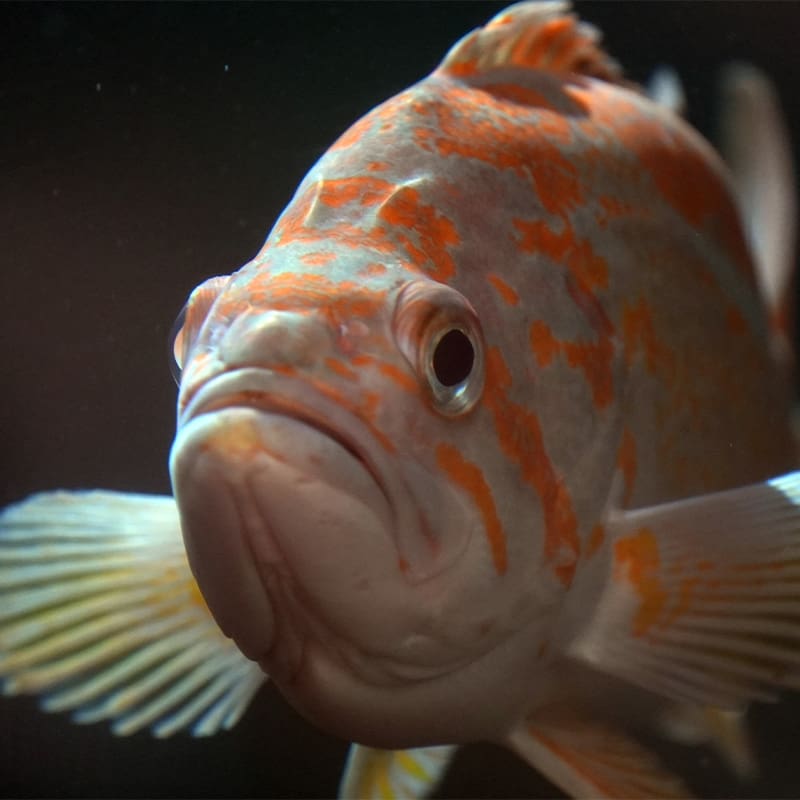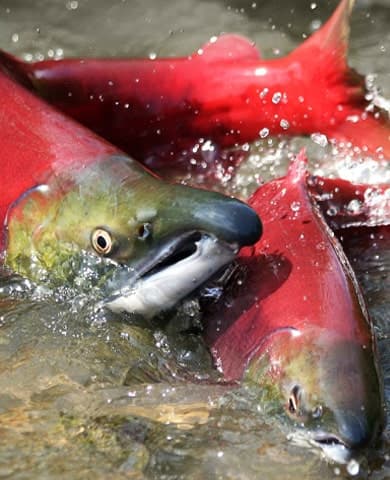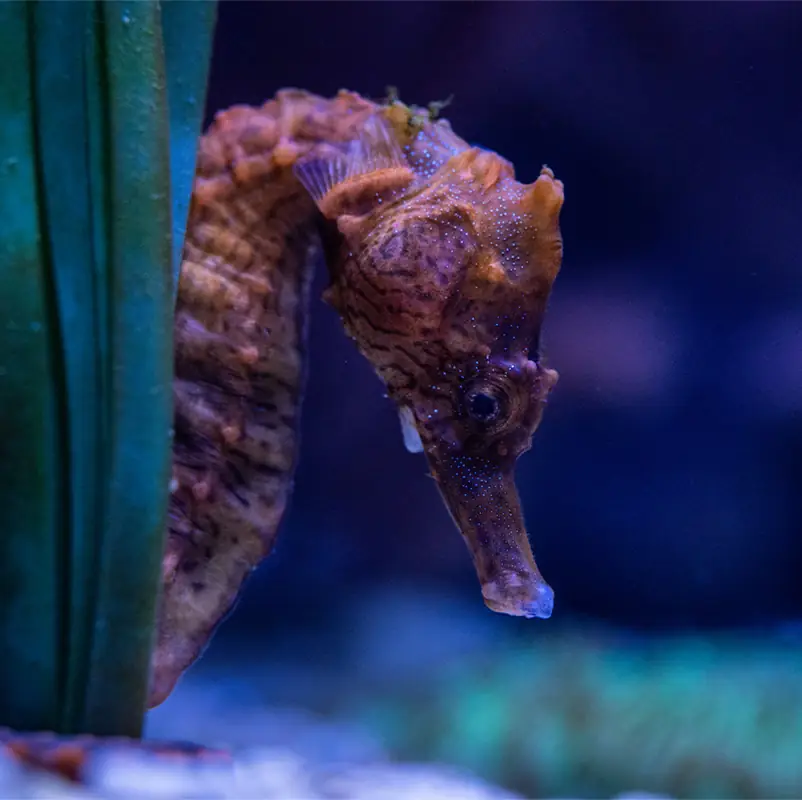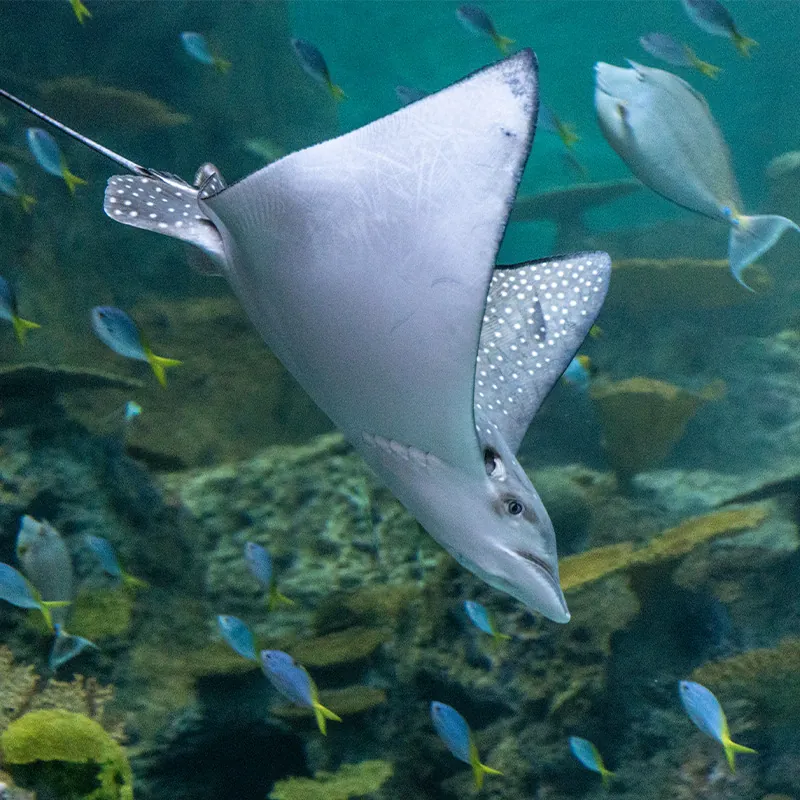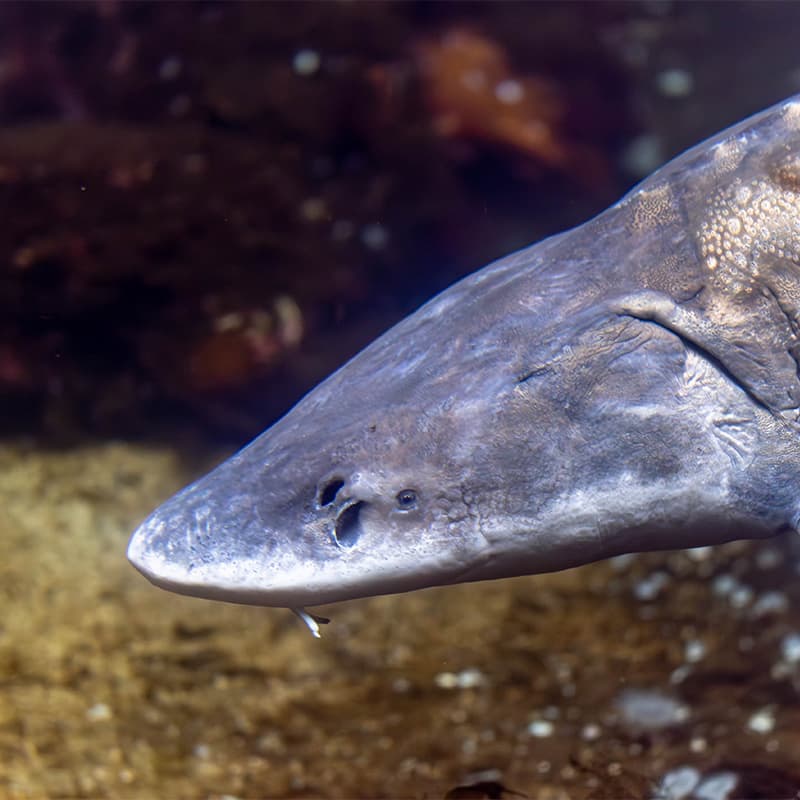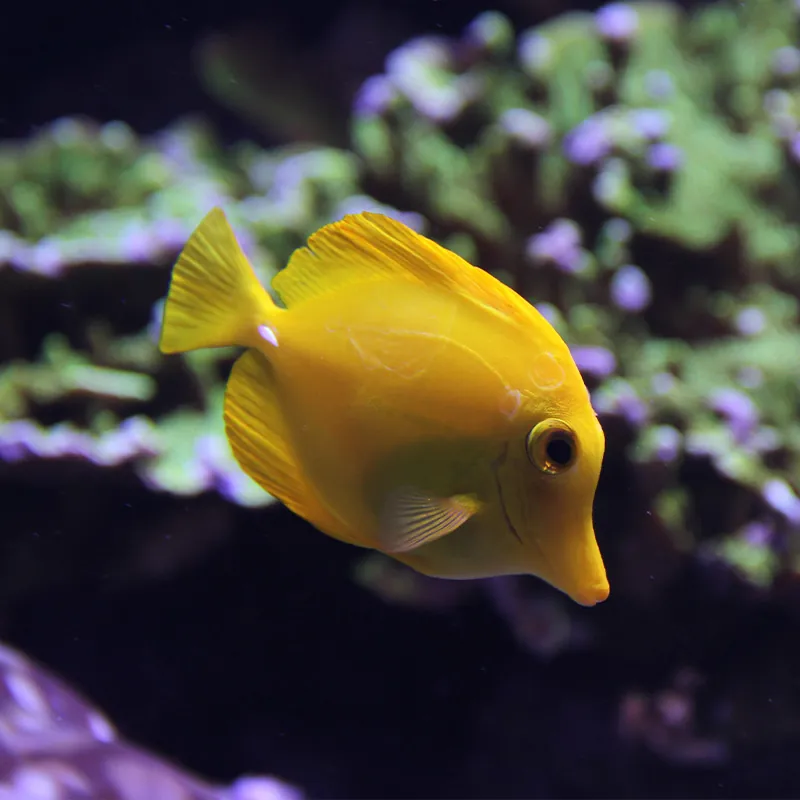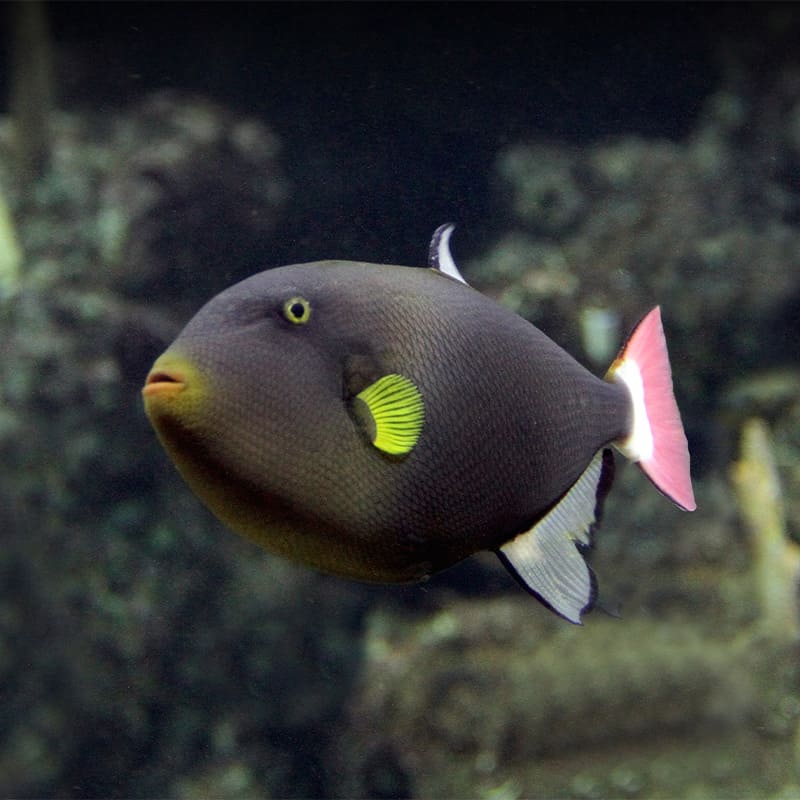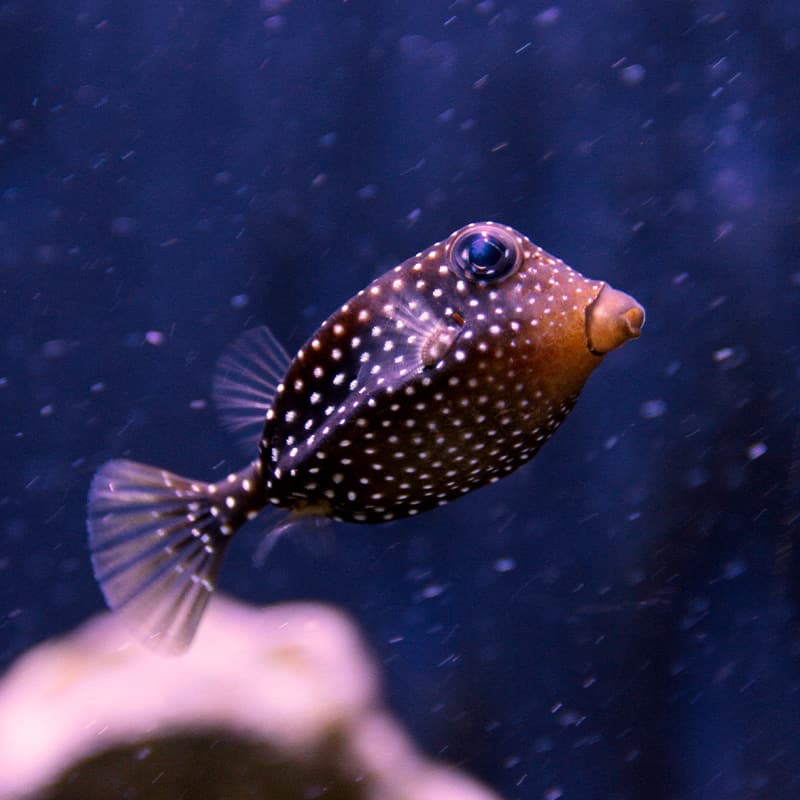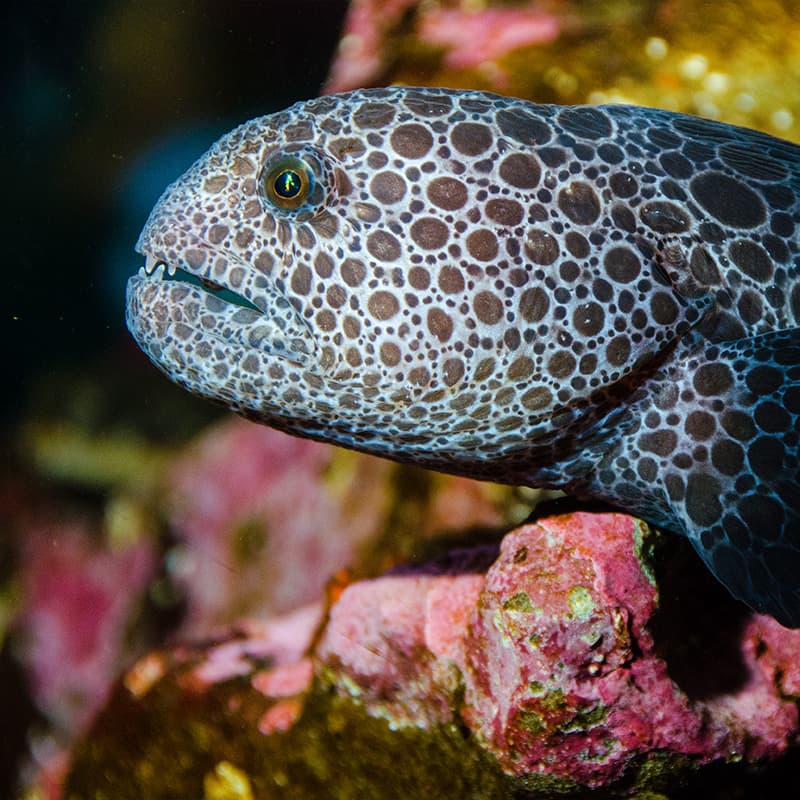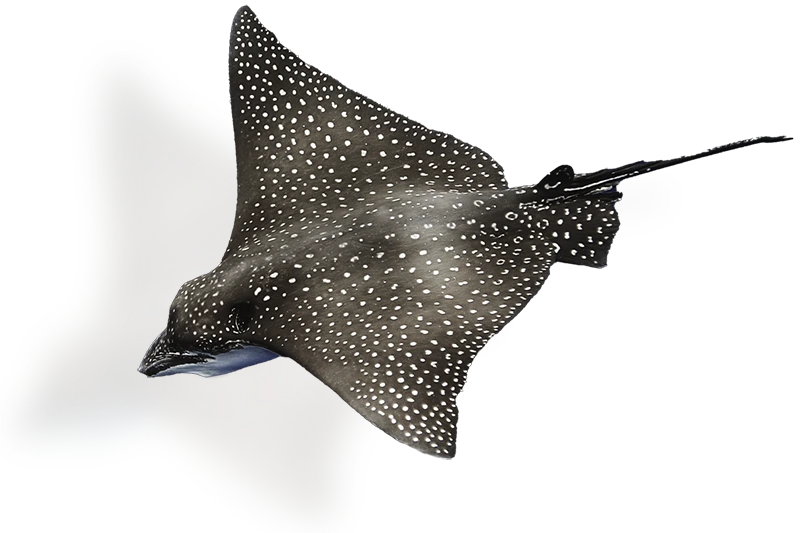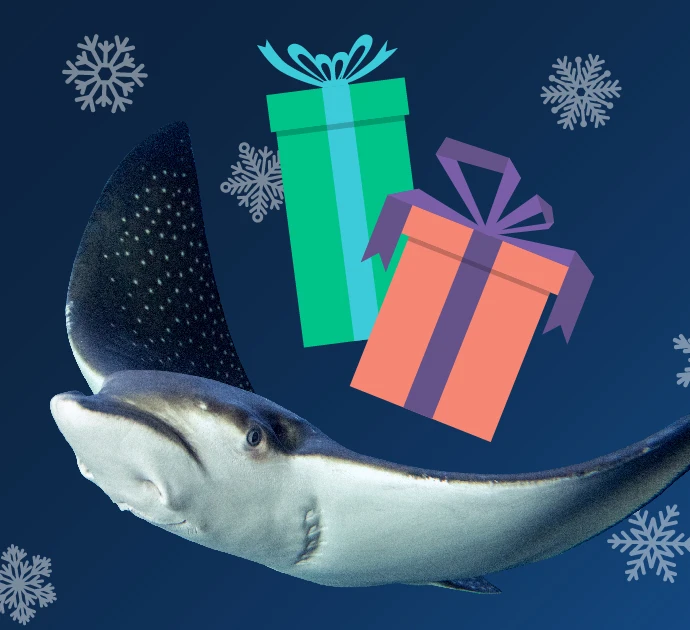- Fish
Indo-Pacific leopard shark
Peaceful predators of coral reefs
Indo-Pacific leopard sharks are slow-swimming reef sharks whose bodies have either a spotted or striped pattern depending on their age. They have five ridges that run the length of their body and five gill slits. Most adults are about 7 to 8 feet long. These sharks are generally docile, but they do hunt their favorite prey: mollusks and crustaceans.
At the Aquarium
- The Reef, Ocean Pavilion
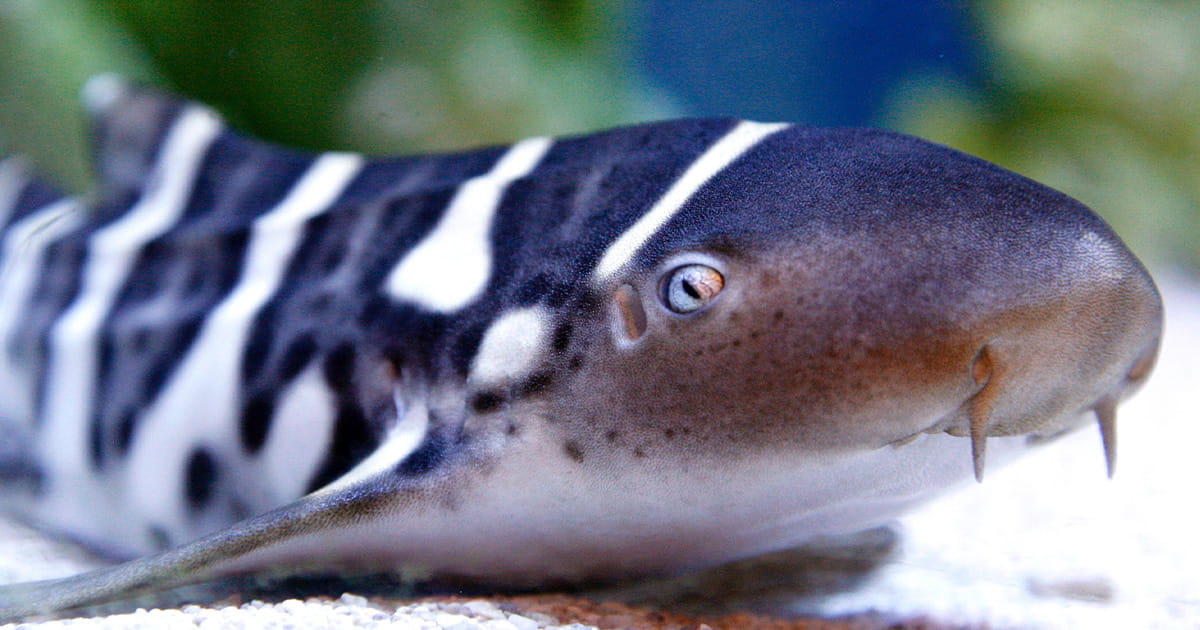
Dots and dashes
Indo-Pacific leopard sharks are also called zebra sharks. Their names come from their distinctive patterning, which changes over time. Pups are born with white and brown stripes. Their pattern makes them look like a group of venomous sea snakes and keeps the vulnerable pups safe from predators. But as they age, the pattern shifts to a spotted look, which helps them camouflage with the sandy seafloor.
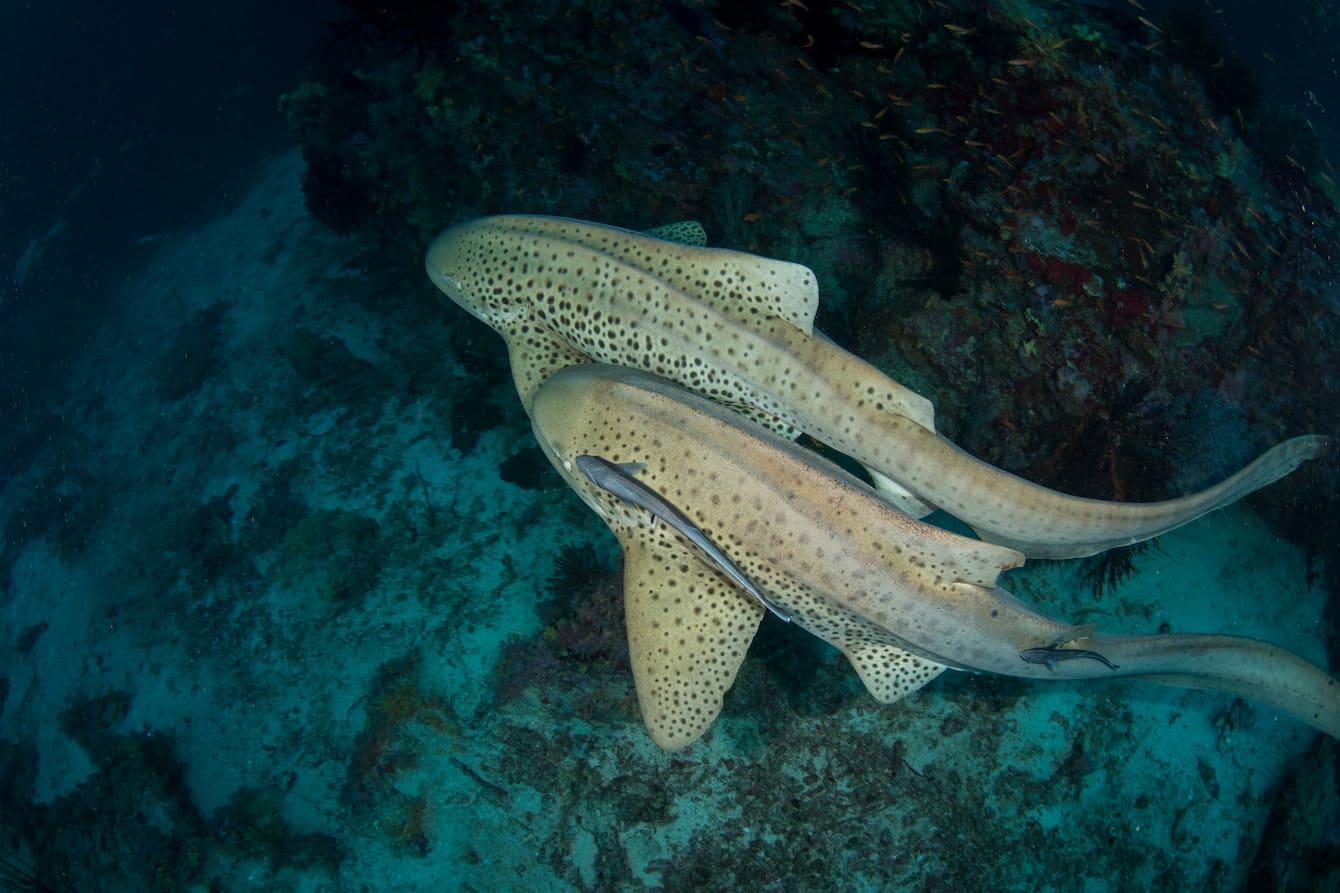
Reproduction rarities
Indo-Pacific leopard sharks lay eggs to reproduce, generally after a male and female have mated. But under some circumstances, female Indo-Pacific leopard sharks have given birth without any male assistance! This rare occurrence is called parthenogenesis and has been observed in multiple shark species. While many animals can reproduce asexually, scientists consider it unusual behavior in complex vertebrates like sharks.
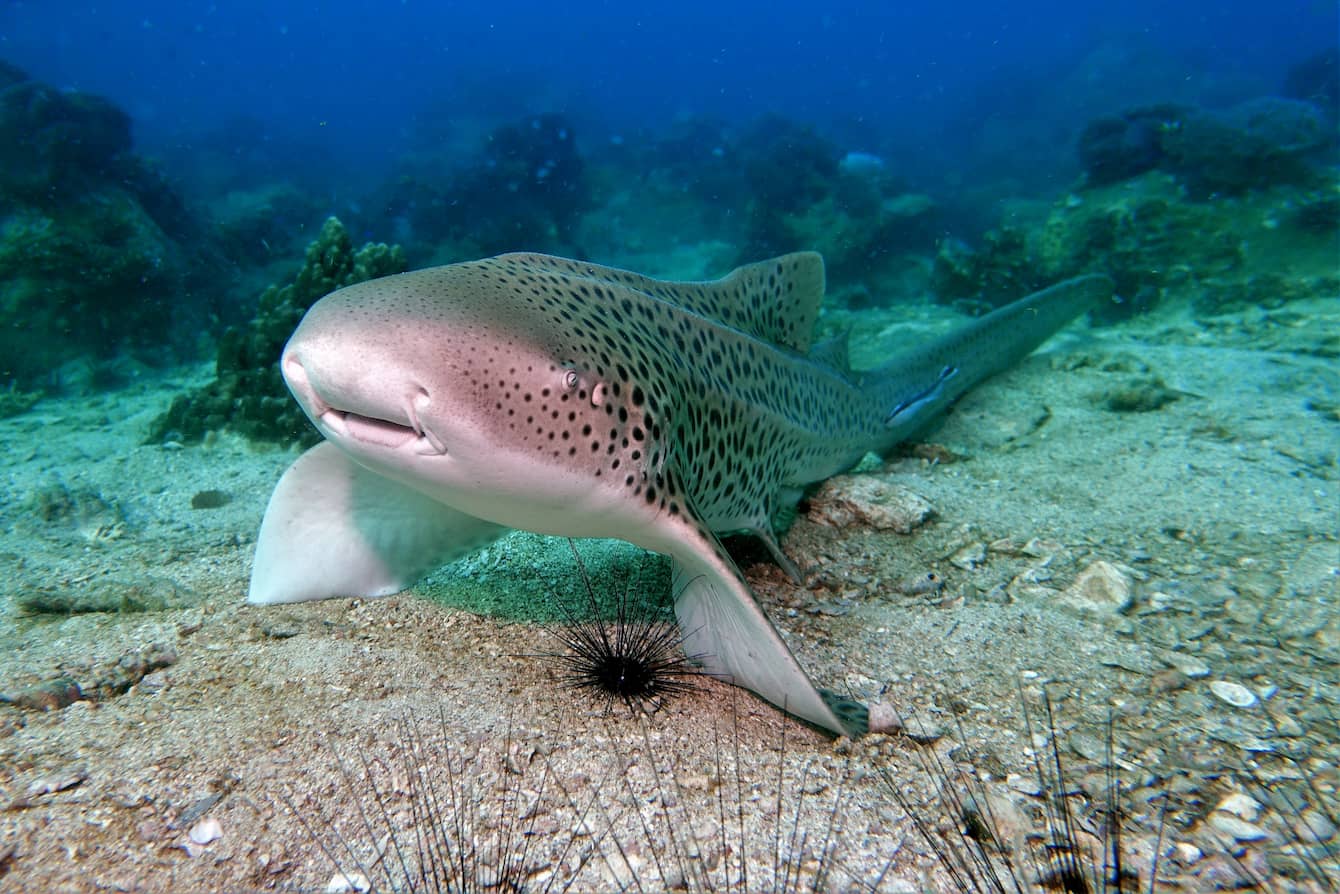
Searching for snacks
Indo-Pacific leopard sharks are nocturnal, meaning they’re active at night and rest during the day. But they have a special adaptation that helps them find food in the dark. These sharks have two whisker-like organs called barbels at the ends of their snout that can help them taste. At night, they use their barbels to search for their favorite prey—which includes mollusks and crustaceans. Once they’ve located a meal, these sharks can use their strong teeth to crunch up shells.
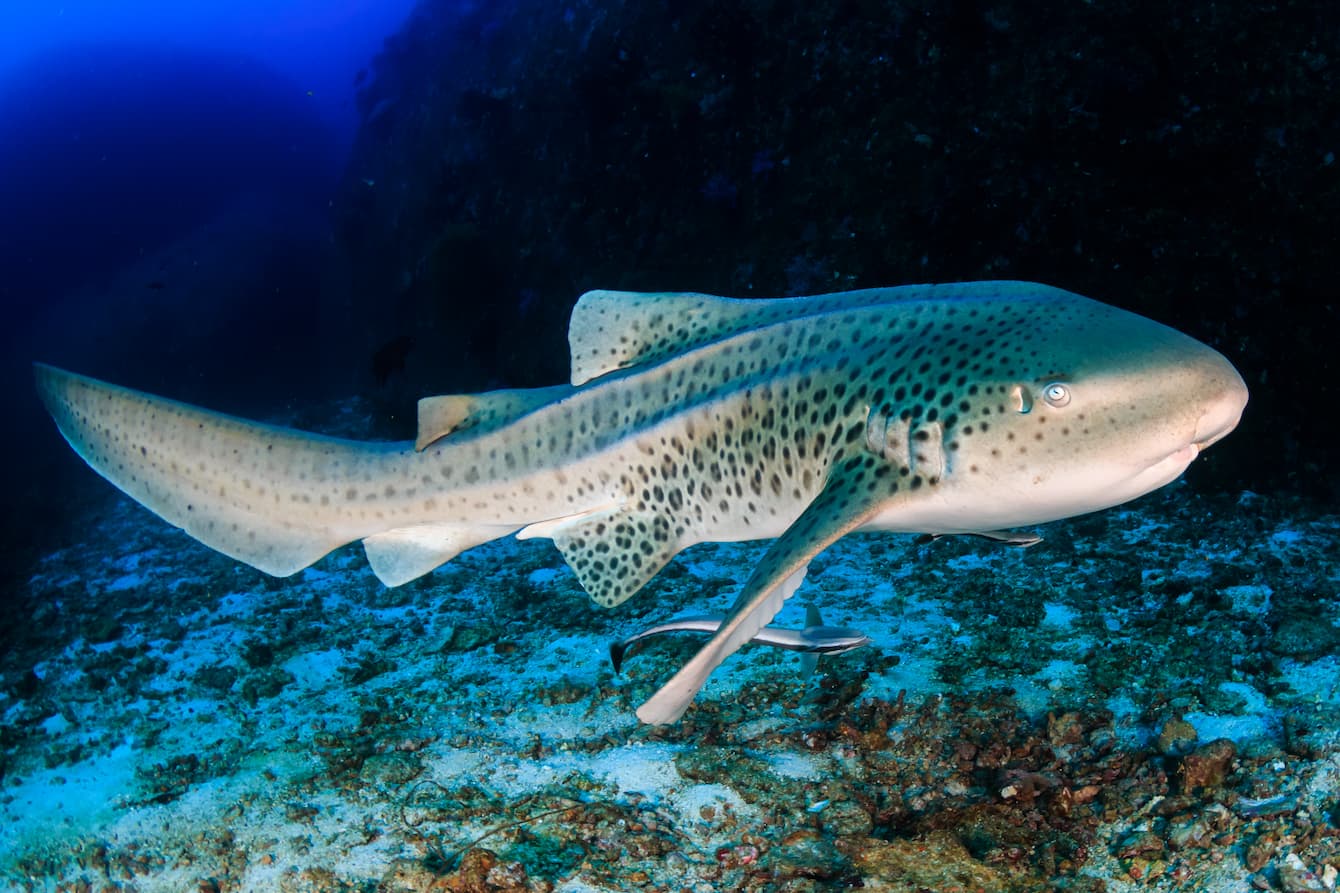
Shrinking shark populations
Indo-Pacific leopard sharks were once abundant in the Coral Triangle, which is an area of incredible marine biodiversity in the western Pacific Ocean. But this shark species—considered endangered by the International Union for Conservation of Nature—is now nearly extinct due to overfishing and habitat loss. It’s estimated that their population in the region has been cut in half over the past 50 years. Indo-Pacific leopard sharks haven’t responded to measures that have restored other endangered species, like creating marine protected areas and banning fishing.
ReSharking the ocean
In 2020, the Seattle Aquarium—along with partners around the world—launched the international ReShark coalition. As its name suggests, the goal is to “reshark” the ocean by restoring healthy populations, starting with Indo-Pacific leopard sharks in Indonesia. Accredited aquariums help sharks already in human care reproduce, and then transport the resulting eggs to nurseries in Raja Ampat, Indonesia. Once hatched, the sharks are reared, tagged and released into marine protected areas within their home waters. Learn more on our Recovering Species page.
Quick facts
Indo-Pacific leopard shark pups have stripes to mimic sea snakes.
Female Indo-Pacific leopard sharks can reproduce without a male.
These sharks are nocturnal—active during the night.
